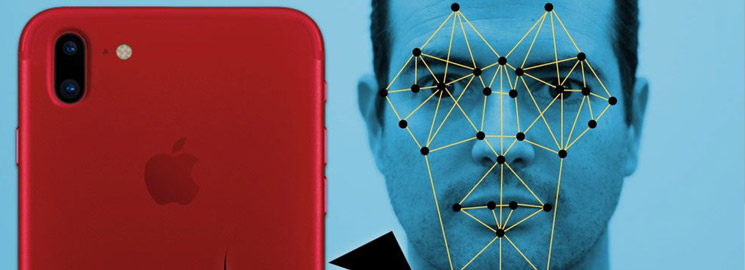In this new age of wearable tech, biometrics and multi-factor authentication, your face is increasingly becoming your digital ID for authenticating who you are online. Take Facebook and Google for instance, users upload a photo and it’s facial recognition algorithm goes to work instantly, taking stock of the people, places, and animals in the image and tagging them. The process is eerily accurate – and in many accounts, they are just getting started. But how does facial recognition software work and what are the future implications?
Facial recognition (or face recognition) is a biometric method of identifying an individual by comparing live captured video or digital image data with stored information found on record for that person. Most current facial recognition systems work with numeric codes called face prints. Such systems identify 80 nodal points on a human face. And so, nodal points are endpoints used to measure variables of a person’s face, such as the length or width of the nose, the depth of the eye sockets and the shape of the cheekbones.
Currently, a lot of facial recognition development is focused on unlocking, logging into and purchasing things with smartphones and computers, social networking integration using image tagging and recognition in services by Facebook, Snapchat, and Google photos. Microsoft currently has facial recognition built into Windows 10 called ‘Windows Hello’ making it easy to securely login to some of their computers without entering a password. On that note, some Android phones have this ability too and also the latest rumors point to Apple using facial recognition in their next generation iPhone. In China, for example, fried chicken franchise KFC recently unveiled its first “smart restaurant” that uses facial recognition to predict what meal customers are likely to want, based on their age, gender and the time of day, while payments can be charged through their ‘smile to pay’ face recognition kiosk. Finally, many banks are now developing this technology to make it possible for people to withdraw money and airlines are getting ready to use it along side boarding passes. So, I’d say be prepared to see this technology as common place in the near future.
Facial recognition seems to be getting more popular, but it does still face more than a few challenges. The notion of unwanted intrusion and secret surveillance at a distance creates a loss of privacy and is a big concern. A recent study found that more than 75 per cent of consumers would not shop at a store that use facial recognition technology just for marketing purposes, and a similar study in the UK found that most shoppers found in-store facial recognition to be “creepy”. For many people right now, if you walk into a airport, a bank, or even down the street, you can look around and see if there’s a police officer close by but with this type of technology you would be totally unaware of hidden cameras monitoring and tracking your movement.
Security experts say that the privacy issues alone highlights the need for greater transparency over what data is collected, and how it is stored and secured. Additionally, concerned privacy advocates suggest that end-users could rebel against this technology if face recognition is not properly explained and implemented. Others are also starting to look at from a legal point of view. Face recognition data can be collected without a person’s knowledge compared to currently accepted fingerprint technology. Whatever side of the fence you sit on, one thing is clear – the technology is here to stay. While there are many benefits, there are clear issues that need resolving. The debate over facial recognition software is set to continue.


Leave a Reply